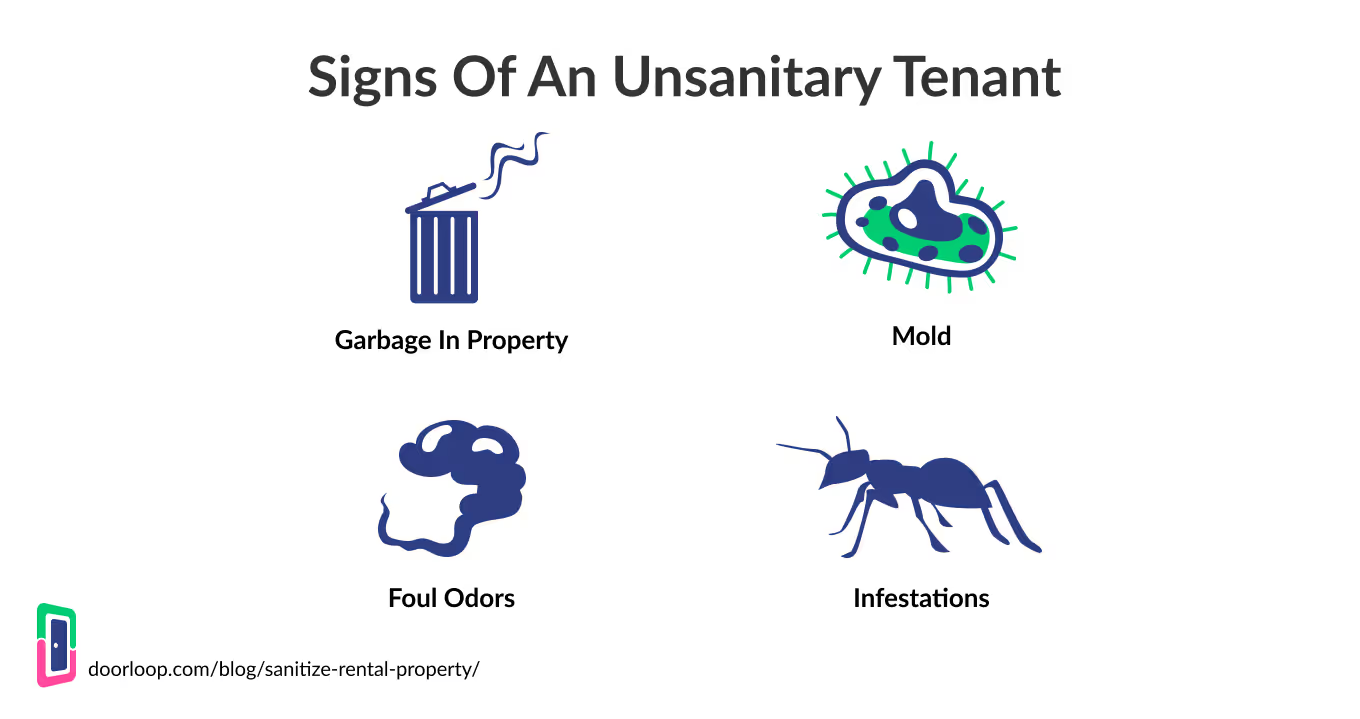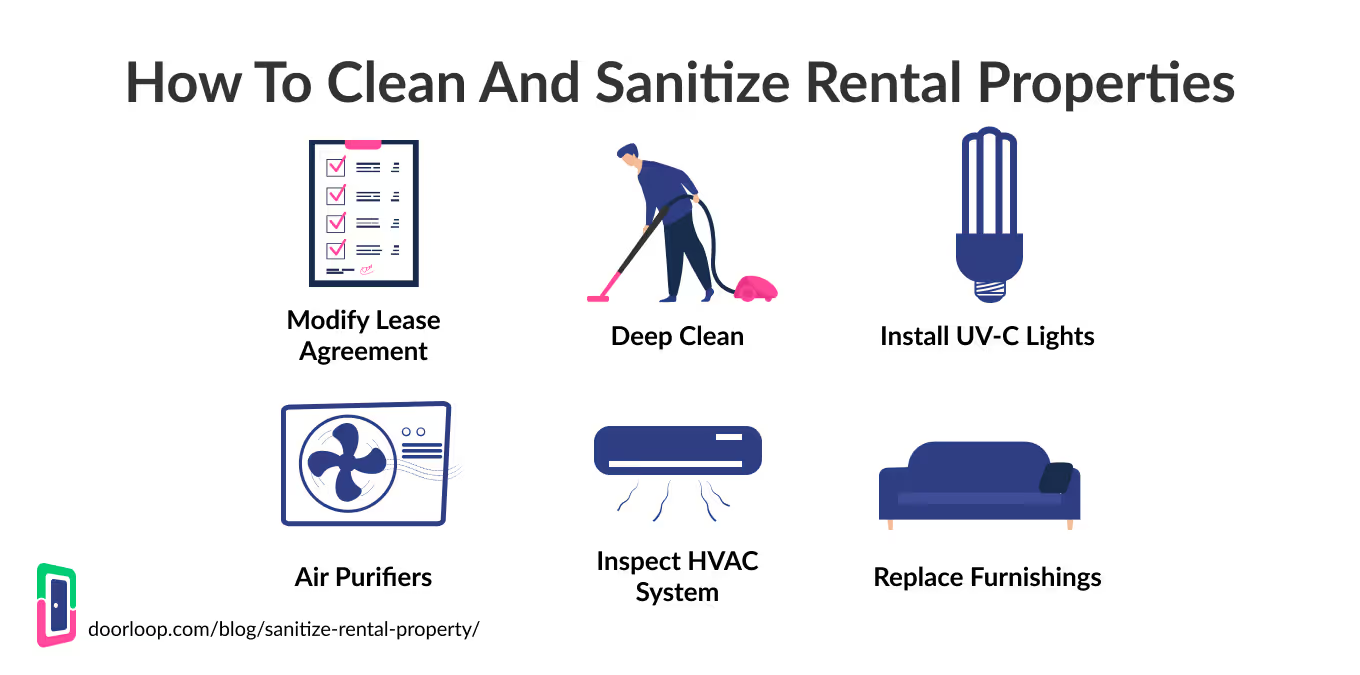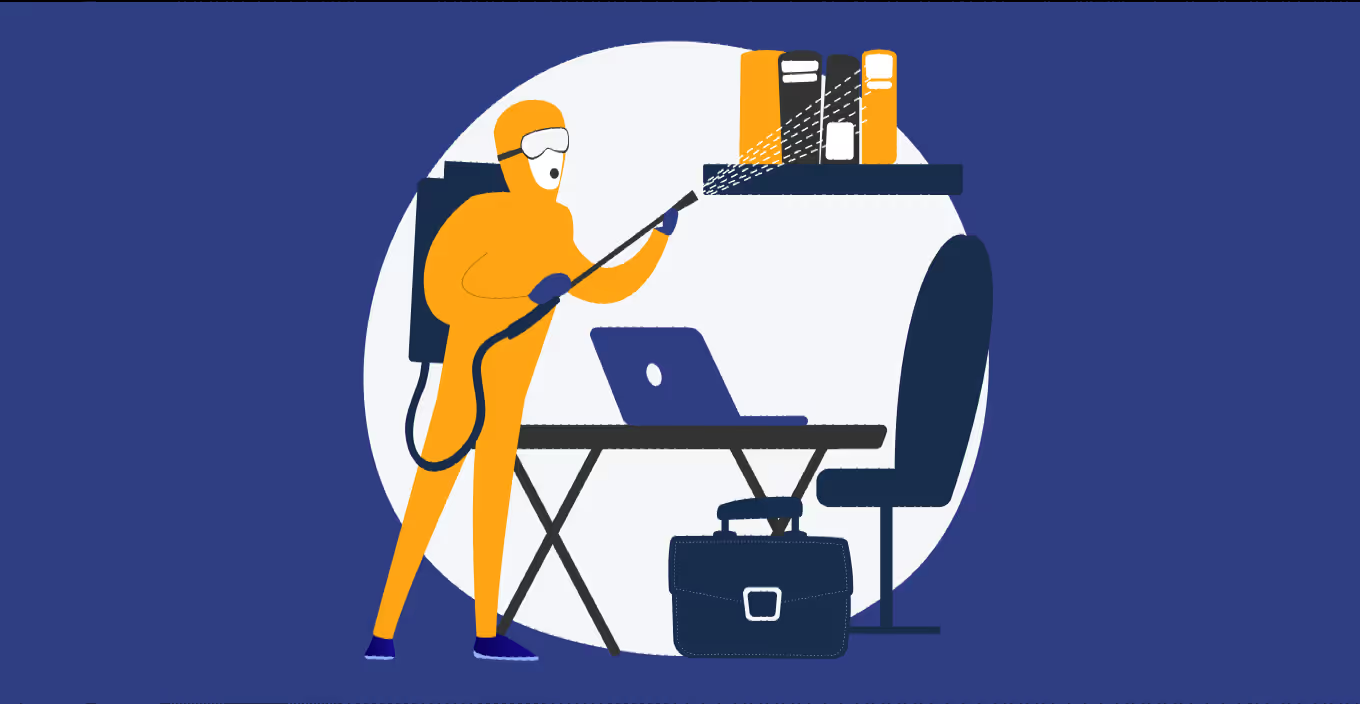A tenant moving out of a rental property can mean a lot of work for landlords.
Apart from having to look for a new tenant, landlords also have to make sure the rental property is ready to be rented out again.
To do this, the landlord or property manager must clean and sanitize the entire unit.
In this guide, we will be covering everything you need to know about how clean you should expect the rental property to be left as well as how to perform a deep cleaning process to get it ready for future tenants.
To begin, let's go over the condition that property managers should expect the property to be left in.

How Clean Does The Property Need To Be Left?
Before doing the final move-out inspection, it is important to know what to expect of the tenant. The rental unit is probably not going to be perfect, but this does not mean that the security deposit should be withheld. Below, we have provided some of the best ways to know what condition to expect your rental property to be in.
Lease Agreement
The first, and most important, way to determine how the property should be left is by checking the lease agreement. The lease agreement or rental agreement typically outlines some of the tenant's responsibilities when it comes to cleanliness.
If it does, it should serve as a guide to how the property should be left. For example, if the lease agreement specifically states that the backyard must be kept clean, the tenant can be charged if the backyard is not clean when moving out. If the lease agreement does not include any section on cleanliness, the next steps may be more useful.
Move-In Checklist
Another way to know what condition the property should be left in is by looking at the move-in checklist. The move-in checklist serves as a comparison tool to know what has changed in the property and what needs to be fixed.
Some landlords choose to do a move-out inspection slightly before the tenant moves out. Then, the inspection results serve as a cleaning checklist for the tenant and they have a chance to do some final move-out cleaning. However, when comparing the two inspections, it is important to differentiate between property damage and normal wear and tear, explained below.
Property Damage vs. Normal Wear And Tear
One of the most important things to remember when conducting a move-out inspection is the difference between property damage and normal wear and tear. Some examples of normal wear and tear include:
- Fading carpets
- Loose grout lines
- Small scuffs or marks on walls
- Warped doors and windows
All of these are examples of very minor property damage that should not be deducted from the security deposit. Some examples of property damage include:
- Large carpet stains
- Holes in doors or walls
- Broken windows
- Peeling or unauthorized wallpaper
These are examples of things that cannot be fixed easily and may require a dedicated cleaning service. In these cases, part of the security deposit may be deducted to cover all of the cleaning expenses.
So, now that we know about what condition to expect a property to be left in, let's quickly discuss how to tell if a tenant is unsanitary when conducting a move-out inspection.

How To Tell If A Tenant Does Not Clean Or Sanitize The Rental Property
When the property manager or property owner is doing the final inspection, there are some things to pick up on that serve as a signal that the tenant does not take care of the property. Below, we have described some of the most obvious signs that a tenant does not take care of the rental property.
Garbage In Property
One of the first telltale signs of an unsanitary tenant is that they have garbage lying around in the property. This garbage can pile up around the property and cause problems. It can also pose as a fire or safety hazard.
Mold
Another easy way to spot a tenant that does not take care of the property is mold. One of the most common places for mold to grow is on the bathroom walls. Some landlords can require that tenants report any signs of mold but, if they do not, they can have part of the security deposit withheld from them.
Foul Odors
If the landlord or property manager smells foul odors as soon as they walk into the property, there is a good chance that the tenant does not take very good care of the property. There are many ways that foul smells can infect rental units but most of them can be prevented with general cleanliness. If you find yourself trying to remove foul smells from the rental property, be sure to visit DoorLoop's Full Guide On Removing Smells From A Rental Property.
Infestations
When property owners walk into their rental properties, the last thing they want to see is an insect infestation. If the rental unit is infested with insects or rodents, the tenant can be responsible for the expenses of removing them.
In the case that a landlord discovers that a tenant does not clean or sanitize the rental property, it is up to them to take care of it. Continue reading to find out how to completely clean and sanitize a rental property.

Top 6 Things To Do To Clean And Sanitize Your Rental Property
Below, we have listed 6 of the best things to do to make sure your rental property is clean and sanitary. Remember that there are only 6 things on this list, but situations vary, and there may be more things to do in some properties.
Include Cleanliness In Lease Agreement
The first thing to do should have actually happened before the previous tenant even moved in. Including a cleanliness clause in your lease agreement can help the tenant gain an idea of what is expected of them. It also allows the property manager to hold the tenant liable if they do not follow any of those rules.
Deep Clean Flooring, Walls, And Ceilings
After making sure that your lease agreement is in order, it's time to get to cleaning. The most notable parts of the rental property to be cleaned are the floors, walls, and ceilings.
This deep cleaning, especially carpet cleaning, can be a real hassle. This is why many property managers choose to go with a cleaning company to take care of it. A cleaning service will typically take care of these parts, as well as most of the other things on this list.
Run UV-C Lights
Although running UV-C lights may not make a noticeable difference, it is still important, especially in these times. UV-C light is a special wavelength of ultraviolet light that serves to disinfect large areas. Using these lights in your rental property allows you to disinfect complete rooms by just turning them on. For more information on using UV-C lights to sanitize a rental property, take a look at DoorLoop's Guide To Using UV-C Light To Sanitize A Rental Property.
Inspect HVAC System
A property's HVAC system can serve as a breeding ground for dangerous bacteria and viruses. It can also get clogged up and make your electricity bills go up. To prevent this, it is important that property managers inspect the HVAC system in the property to make sure that there is no mold growing.
It is also important to make sure that the air ducts are clear and the air is flowing freely. To learn more about cleaning air ducts and your HVAC system in general, visit DoorLoop's Complete Guide To Cleaning Air Ducts In Rental Properties.
Install Air Purifiers
Another way to make sure that the air quality in your rental property is good is to install air purifiers. Installing air purifiers is a great way to "clean" the air around a certain area and make sure that it is free of bacteria or viruses. Some of the benefits of higher air quality include:
- Eliminating unwanted odors
- Better for the environment
- Happier tenants
- Making it easier to breathe
If you want to learn more about air purifiers in rental properties, be sure to visit DoorLoop's Full Guide On Air Purifiers.
Clean Or Replace Furnishings
Especially for a furnished apartment move-out cleaning, it may be a good idea to clean or replace all furnishings. This means replacing things like:
- Couches
- Chairs
- Carpets
- Tables
- Beds
There are also other, smaller, things that should be replaced, like:
- Light fixtures
- Smoke detectors
- Locks
- Air filters
All of these are things that should be replaced, or taken care of, before renting out the property to another tenant.
These were the 6 best things to do to clean and sanitize your rental property for future tenants. But, what if you can prevent a portion of this cleaning? In the next section, we will be discussing some of the ways to get your tenants to clean and sanitize the property themselves.

How To Get Your Tenants To Clean And Sanitize The Rental Property
If your tenants regularly clean and sanitize the rental property, you won't have to worry about deep cleaning it when they move out. Below are some of the best ways to get your tenants to do just that.
Require It In The Lease Agreement
As mentioned before, requiring cleanliness in the lease agreement is always a great idea. When a tenant knows that they are responsible for the cleanliness of the rental property, they will probably take better care of it.
It is also a good idea to explain to them the consequences of not keeping the rental property clean. Most tenants are very fond of their security deposit so they will work to make sure they keep it.
Conduct Regular Inspections
Another great way to make sure that your tenants maintain cleanliness is the rental property is by conducting inspections. When you conduct inspections, you are can let the tenant know if they are not taking enough care of the property and give them a chance to fix it.
However, there are many rules and regulations regarding rental property inspections. If you want to learn all about these, be sure to visit DoorLoop's guide on rental property inspections.
Thoroughly Screen Tenants
Finally, the best way to make sure that your tenants take care of the property is by screening them. When screening a tenant, landlords can find all sorts of information about their rental history. This can show any evictions, problems with landlords, complaints, or anything else pertaining to renting.
For information on finding a tenant's renting history, visit DoorLoop's Full Guide To Finding Tenant Records.
































.svg)
.svg)

